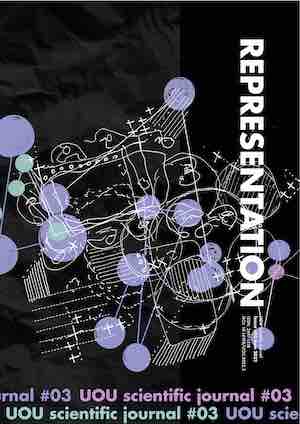(Re)Presenting Representation
Abstract
EditorialRepresentation is a broad umbrella that covers different disciplines such as design, the arts, architecture, cinema, literature, politics, economics, semiotics, etc… We may even say that representation is in every act of human beings whenever they think about something.
This fundamental role of representation makes it very critical in the design process, thus the design process is based on the dialogue between the inner and outer representations. In this third issue of UOU Scientific Journal, we would like to focus on the nature of representation, its own ontological aspects, materiality, immateriality, and its crucial role in the design process rather than its metaphorical side related with politics and semiotics.
Hans-Georg Gadamer points out that “representation does not imply that something merely stands in for something else as if it were a replacement or substitute that enjoys a less authentic, more indirect kind of existence. On the contrary, what is represented is itself present in the only way available to it.1” In this respect, representation can be the subject of research. Here two conceptions may occur: representation of the world and the world of representation. The former proposes the origins of representation for the agenda, such as the ways of representing the world during the Medieval, Renaissance, Baroque, Modern or contemporary periods. The latter highlights the ontology of representation and its emancipatory, participatory, imaginative, speculative, predictive, and interpretive characters.
“The tension between the productive and the creative reality of architecture may be better understood if we examine more closely the nature and role of representation. In a conventional understanding, representation appears to be a secondary and derivative issue, associated closely with the role of the representational arts. However, a more careful consideration reveals, very often to our surprise, how critical and universal the problem of representation really is. What we normally refer to as reality, believing that it is something fixed and absolute, is always a result of our ability to experience, visualize, and articulate—in other words, to represent so as to participate in the world. Countering representation’s participatory function is its tendency toward emancipation and autonomy.
Downloads
Downloads
Published
How to Cite
Issue
Section
License
Copyright (c) 2022 Ozan Avci

This work is licensed under a Creative Commons Attribution 4.0 International License.
The authors keep their rights upon their work, although they transfer, in a non-exclusive way, the rights of exploitation (reproduction, publication, distribution, public dissemination and presentation) to the Journal. The authors are, therefore, free to enter additional, separate contracts for the non-exclusive distribution of the version of the work published in the Journal (for instance, by hosting in an institutional repository or publication in a book), provided credit is given that the work was initially published in this journal. The works are published under a Creative Commons Attribution 4.0 (CC BY 4.0) license.












